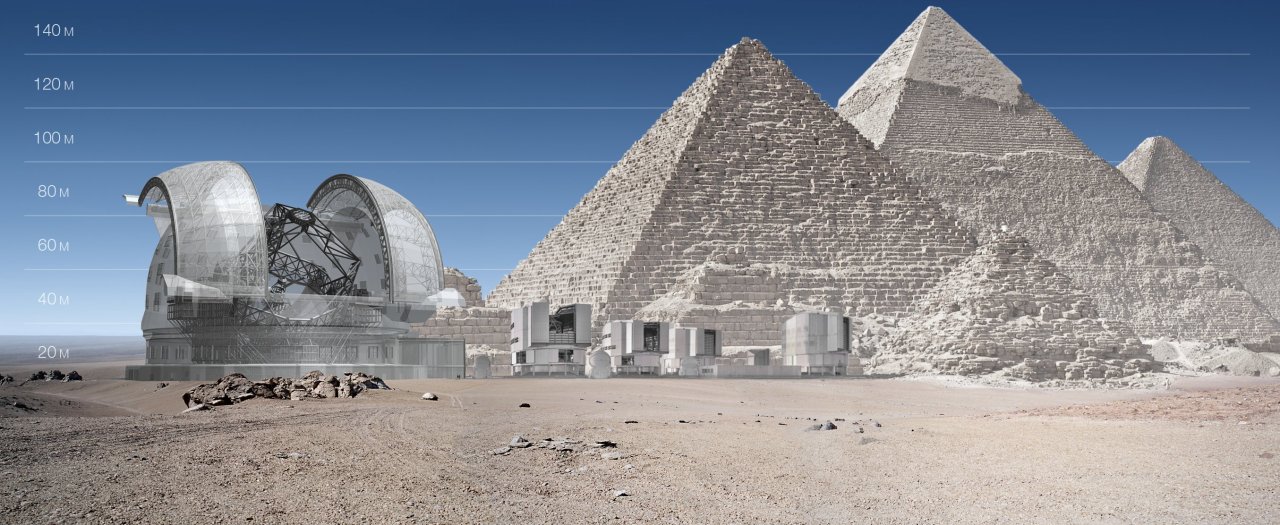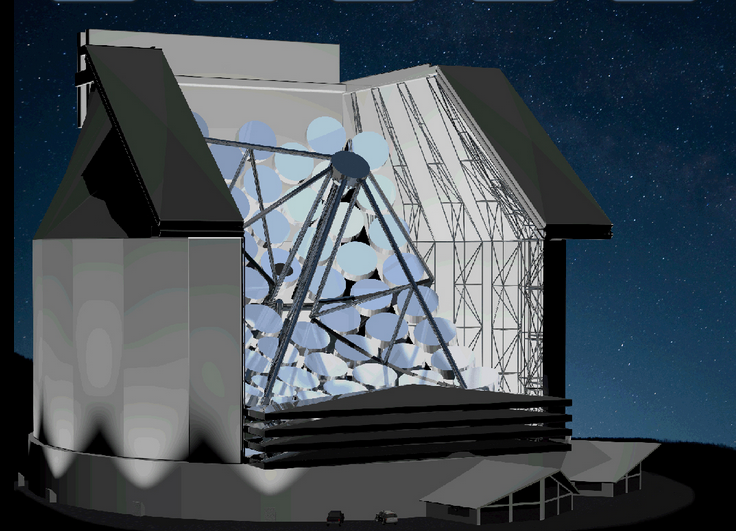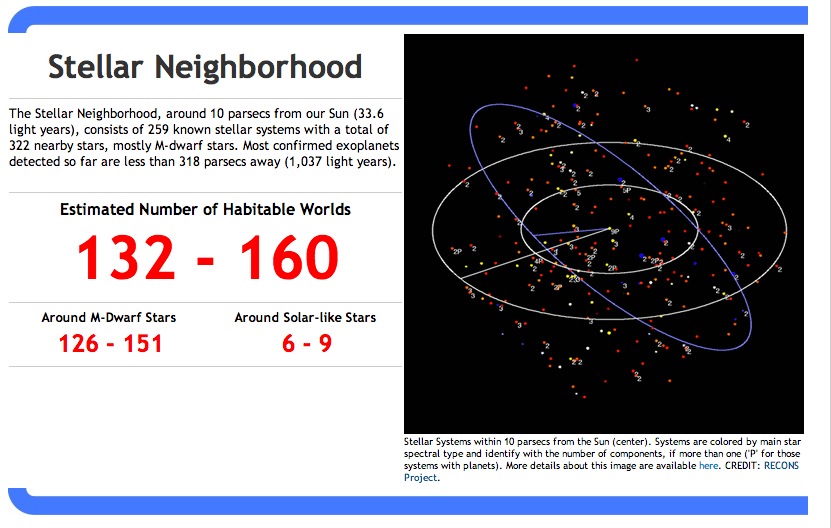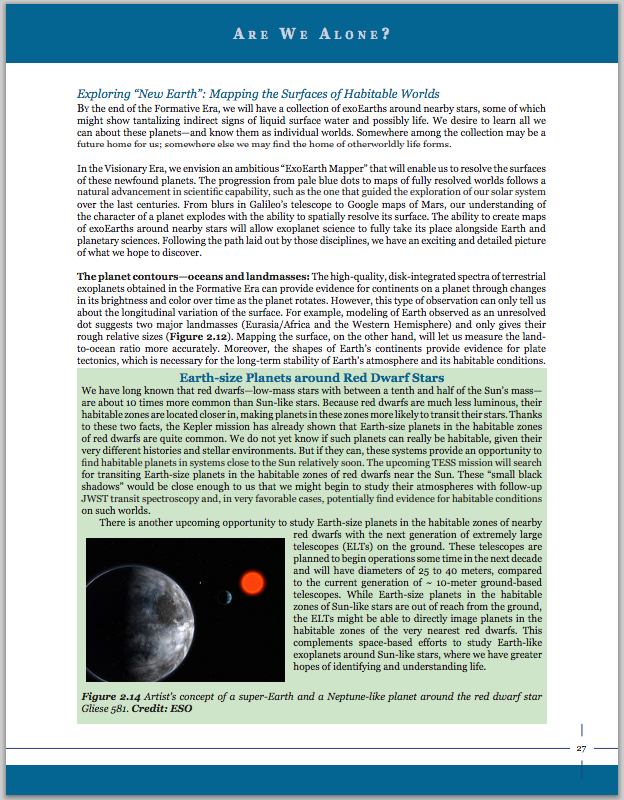It looks like you're using an Ad Blocker.
Please white-list or disable AboveTopSecret.com in your ad-blocking tool.
Thank you.
Some features of ATS will be disabled while you continue to use an ad-blocker.
share:
As for the question of whether we're alone, almost no one in the sciences believes that we are as evidence mounts that planets like the Earth are more
common than was thought even a generation ago.
The race to find life in the universe is a 3-way race between three different approaches:
1. The search for life in our solar system (Mars, eventually Europa, Titan and Enceladus).
2. SETI (Searches for detectable ET technology, radio, lasers, large scale engineering, artifacts)
3. Exoplanet biosignatures/biomarkers (Developing the technology to directly image small rocky worlds like Earth to look for signs of life in their atmosphere - Oxygen and Methane etc)
Which approach will be -the- one?
No one knows. But if I were going to Vegas I would place my bet on #3 being the one to win the race. There are a number of large ground based telescopes being built over the next decade in addition to the James Webb Space Telescope and even larger ones in development.




In fact, noted planet hunter Sara Seager has stated that due to advances in technology we will likely have the technology to find any life on planets around nearby M-dwarf stars by 2020.

That's less than a decade away.
Seth Shostak from SETI went a little further and said we almost certainly will find life out there within 20 years.


The race to find life in the universe is a 3-way race between three different approaches:
1. The search for life in our solar system (Mars, eventually Europa, Titan and Enceladus).
2. SETI (Searches for detectable ET technology, radio, lasers, large scale engineering, artifacts)
3. Exoplanet biosignatures/biomarkers (Developing the technology to directly image small rocky worlds like Earth to look for signs of life in their atmosphere - Oxygen and Methane etc)
Which approach will be -the- one?
No one knows. But if I were going to Vegas I would place my bet on #3 being the one to win the race. There are a number of large ground based telescopes being built over the next decade in addition to the James Webb Space Telescope and even larger ones in development.




In fact, noted planet hunter Sara Seager has stated that due to advances in technology we will likely have the technology to find any life on planets around nearby M-dwarf stars by 2020.

That's less than a decade away.
Seth Shostak from SETI went a little further and said we almost certainly will find life out there within 20 years.


edit on 24-4-2014 by JadeStar because: (no reason given)
a reply to: JadeStar
I really appreciate your reply. It is always pleasing to have someone with a grasp of the subject respond.
I will say, I would suppose you'll agree, that the 10 parsecs (33.6 light years) from our sun looks like a short strol compared to the vast distances shown in the picture.
I really appreciate your reply. It is always pleasing to have someone with a grasp of the subject respond.
I will say, I would suppose you'll agree, that the 10 parsecs (33.6 light years) from our sun looks like a short strol compared to the vast distances shown in the picture.
originally posted by: teamcommander
a reply to: JadeStar
I really appreciate your reply. It is always pleasing to have someone with a grasp of the subject respond.
I will say, I would suppose you'll agree, that the 10 parsecs (33.6 light years) from our sun looks like a short strol compared to the vast distances shown in the picture.
Absolutely. Space is vast. And that's an understatement
Still, within that 10 parsecs there are a LOT of interesting places where life may have developed and evolved.
One of the quiet revolutions in astronomy has been more interest turning from looking at massive energetic things far, far away (quasars, distant supernovae, etc) to small, meek, quiet stars in our own backyard, and any planets they may have.
We're about to learn a whole lot more about our little neck of the woods in the Milky Way, with greater and greater detail.
edit on 24-4-2014
by JadeStar because: (no reason given)
originally posted by: Aleister
a reply to: JadeStar
I for two must say how much I've missed your posts and threads lately. Said it before before I say it again, ATS is lucky to have you wandering the halls.
Thank you. I'll try to pop in here as time allows.
edit on 24-4-2014 by JadeStar because: (no reason given)
originally posted by: JadeStar
originally posted by: Snarl
originally posted by: teamcommander
originally posted by: Snarl
a reply to: teamcommander
I wonder what that picture will look like taken a hundred years from now.
A hundred years is less than the blink of an eye in real universal time.
The perspective won't even change very much by then.
I'd wager the resolution improves by a factor of a thousand. I'd wager we'd be seeing objects well beyond the accepted 13.8B LY limit.
Not really. At least not with a visible/near-IR telescope like Hubble.
Due to the redshift, they'd have to keep looking at lower and lower wavelengths of light, deep into the infrared, then millimeter radiation before ending up in radio.
See Cosmic Microwave Background Radiation.
Ooh, I don't know. There's something else out there and all around us. Measurements of what can be seen and what can be detected with current technologies aren't filling out the equation. Think DM and DE. What'll happen when we can 'see' them?
We've extended our abilities of perception farther than anyone would have anticipated 200 years ago. The Hubble deep field image surprised a lot of folks in your field too, didn't it?
Good to see you back and active on the boards.
originally posted by: Snarl
originally posted by: JadeStar
originally posted by: Snarl
originally posted by: teamcommander
originally posted by: Snarl
a reply to: teamcommander
I wonder what that picture will look like taken a hundred years from now.
A hundred years is less than the blink of an eye in real universal time.
The perspective won't even change very much by then.
I'd wager the resolution improves by a factor of a thousand. I'd wager we'd be seeing objects well beyond the accepted 13.8B LY limit.
Not really. At least not with a visible/near-IR telescope like Hubble.
Due to the redshift, they'd have to keep looking at lower and lower wavelengths of light, deep into the infrared, then millimeter radiation before ending up in radio.
See Cosmic Microwave Background Radiation.
Ooh, I don't know. There's something else out there and all around us. Measurements of what can be seen and what can be detected with current technologies aren't filling out the equation. Think DM and DE. What'll happen when we can 'see' them?
Well I suspect that DM and DE may be something like the neutrino.
No one ever will see a neutrino.
We know they exist because we can detect their effects when they pass through a detector. The effect we detect is a light flash.
So....did we see the neutrino? No but we know it exists.
Dark matter and dark energy are much the same.
We may someday have an explanation for them but I don't suspect we will ever see them in the same way that we have infrared, radio, gamma ray and xray astronomy.
We've extended our abilities of perception farther than anyone would have anticipated 200 years ago. The Hubble deep field image surprised a lot of folks in your field too, didn't it?
It idid. But it didn't violate the laws of physics. Deep as the Hubble Deep Field is, it does not and could never go beyond a certain distance point because it was taken in visible/near-IR light.
At some point there is a visual barrier where you will not see anything else in visible light. In order to see further back in time you have to look at lower and lower frequencies of light, eventually you run up against the wall that is the cosmic microwave background radiation.
There was even a Cosmos episode which talked about this last week. You should check it out
Good to see you back and active on the boards.
Thanks. Like I said, things are getting busier in my life but I will try to pop in from time to time when interesting news from my field is about to break or has already hit the headlines.
new topics
-
Ed Dowd some good news
Medical Issues & Conspiracies: 6 hours ago -
Anyone like the Scorpions?
Music: 6 hours ago -
What if this is true?
2024 Elections: 7 hours ago -
Merry-Go-Round Ride
Short Stories: 9 hours ago
top topics
-
A fix for the Trans players in sports
Social Issues and Civil Unrest: 16 hours ago, 16 flags -
What if this is true?
2024 Elections: 7 hours ago, 13 flags -
Man Stabbed or Cardiac arrest on Westminster Bridge, London, UK
Mainstream News: 14 hours ago, 7 flags -
It's toast
General Chit Chat: 13 hours ago, 7 flags -
Ed Dowd some good news
Medical Issues & Conspiracies: 6 hours ago, 6 flags -
Merry-Go-Round Ride
Short Stories: 9 hours ago, 5 flags -
Anyone like the Scorpions?
Music: 6 hours ago, 3 flags
active topics
-
President-Elect DONALD TRUMP's 2nd-Term Administration Takes Shape.
Political Ideology • 244 • : WeMustCare -
Ed Dowd some good news
Medical Issues & Conspiracies • 4 • : ksihkahe -
Ok this is some BS now WTH
Rant • 18 • : VariedcodeSole -
Post A Funny (T&C Friendly) Pic Part IV: The LOL awakens!
General Chit Chat • 7822 • : KrustyKrab -
Anyone like the Scorpions?
Music • 4 • : KrustyKrab -
-@TH3WH17ERABB17- -Q- ---TIME TO SHOW THE WORLD--- -Part- --44--
Dissecting Disinformation • 3372 • : WeMustCare -
International Criminal Court Issues Arrest Warrant For Netanyahu
Mainstream News • 49 • : Degradation33 -
France gives Ukraine license to fire long-range missiles at Russia
World War Three • 41 • : Connector -
What if this is true?
2024 Elections • 25 • : BernnieJGato -
Russia Ukraine Update Thread - part 3
World War Three • 6877 • : worldstarcountry
